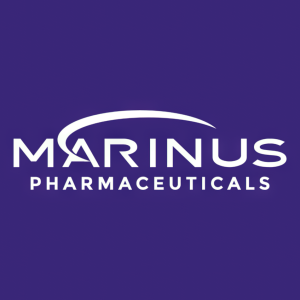Marinus Pharmaceuticals Announces Publication in The Lancet Neurology of ZTALMY® (ganaxolone) Phase 3 Marigold Trial Results
Results demonstrate safety and efficacy of ZTALMY, first FDA-approved treatment for seizures associated with CDKL5 deficiency disorder in patients two years and older
“The publication of these data highlights the importance of bringing new treatments to people affected by very refractory epilepsy, including the CDKL5 deficiency disorder community, and adds to the growing body of clinical research data currently available,” said Dr.
The paper presents the results of the Phase 3 Marigold trial, a double-blind placebo-controlled trial in which 101 patients were randomized and individuals treated with ZTALMY showed a median
“We are pleased to have results from the Marigold trial published in The Lancet Neurology, a highly ranked peer-reviewed journal, at this inflection point for Marinus,” said
About CDKL5 Deficiency Disorder
CDKL5 deficiency disorder (CDD) is a serious and rare genetic disorder that is caused by a mutation of the cyclin‑dependent kinase‑like 5 (CDKL5) gene, located on the X chromosome. CDD is characterized by early‑onset, difficult‑to‑control seizures and severe neurodevelopmental impairment.
About ZTALMY® (ganaxolone) oral suspension
ZTALMY® is the first and only FDA-approved treatment indicated specifically for seizures associated with cyclin-dependent kinase-like 5 deficiency disorder (CDD) in patients two years of age and older. ZTALMY, a neuroactive steroid that acts as a positive allosteric modulator of the GABAA receptor, is taken three times daily. It is expected to be available in July following scheduling by the
Indication and Usage
ZTALMY is indicated for the treatment of seizures associated with cyclin-dependent kinase like 5 (CDKL5) deficiency disorder (CDD) in patients 2 years of age and older.
Important Safety Information
Warnings and Precautions
Somnolence and Sedation: ZTALMY can cause somnolence and sedation. In a clinical study somnolence and sedation appeared early during treatment and were generally dose related. Other CNS depressants, including opioids, antidepressants, and alcohol, could potentiate these effects. Monitor patients for these effects and advise them not to drive or operate machinery until they have gained sufficient experience on ZTALMY to gauge whether it adversely affects their ability to drive or operate machinery.
Suicidal Behavior and Ideation: Antiepileptic drugs (AEDs), including ZTALMY, increase the risk of suicidal thoughts or behavior. Monitor patients taking ZTALMY for the emergence or worsening of depression, suicidal thoughts or behavior, or any unusual changes in mood or behavior. Advise patients, caregivers, and their families to be alert for these behavioral changes and report behaviors of concern immediately to healthcare providers. When considering ZTALMY, or any other AED, balance the risk of suicidal thoughts or behaviors with the risk of untreated illness. If these symptoms emerge during treatment, consider whether it may be related to the AED or the underlying illness.
Withdrawal of Antiepileptic Drugs: As with most AEDs, withdraw ZTALMY gradually to minimize the risk of increased seizure frequency and status epilepticus. If withdrawal is needed because of a serious adverse event, rapid discontinuation can be considered.
Adverse Reactions
The most common adverse reactions (incidence of at least
Drug Interactions
Cytochrome P450 inducers will decrease ganaxolone exposure. Avoid concomitant use with strong or moderate CYP3A4 inducers; if unavoidable, consider a dosage increase of ZTALMY, but do not exceed the maximum recommended dosage.
Use In Specific Populations
Pregnancy: Use caution when ZTALMY is administered to pregnant women as there are no adequate data on the developmental risk associated with use in pregnant women. In animal studies, developmental adverse effects were observed following exposure during organogenesis or throughout gestation and lactation.
Lactation: ZTALMY is excreted in human milk at concentrations resulting in a dose to the breastfed infant of
Hepatic Impairment: Monitor patients with hepatic impairment for the incidence of adverse reactions. Patients with hepatic impairment may require a reduced dosage of ZTALMY.
Drug Abuse and Dependence
ZTALMY contains ganaxolone (controlled substance schedule to be determined after review by the
Full Prescribing Information for ZTALMY® is available here.
About
Marinus is a pharmaceutical company dedicated to the development of innovative therapeutics to treat seizure disorders. Ganaxolone is a neuroactive steroid GABAA receptor modulator that acts on a well-characterized target in the brain known to have anti-seizure effects. It is being developed in IV and oral dose formulations intended to maximize therapeutic reach to adult and pediatric patient populations in both acute and chronic care settings. For more information visit www.marinuspharma.com.
Forward-Looking Statements
To the extent that statements contained in this press release are not descriptions of historical facts regarding Marinus, they are forward-looking statements reflecting the current beliefs and expectations of management made pursuant to the safe harbor provisions of the Private Securities Litigation Reform Act of 1995. Words such as "may", "will", "expect", "anticipate", "estimate", "intend", "believe", and similar expressions (as well as other words or expressions referencing future events, conditions or circumstances) are intended to identify forward-looking statements. Examples of forward-looking statements contained in this press release include, among others, statements regarding our expected clinical development plans, enrollment in our clinical trials, regulatory communications and submissions; product launches for ganaxolone, and the timing thereof; our continued explorations of ganaxolone across a range of seizure disorders; our expectations in ganaxolone’s unique mechanism of action to benefit patients with seizure disorders; our expectation regarding ZTALMY’s availability; and other statements regarding the Company's future operations, financial performance, financial position, prospects, objectives and other future event.
Forward-looking statements in this press release involve substantial risks and uncertainties that could cause our clinical development programs, future results, performance or achievements to differ significantly from those expressed or implied by the forward-looking statements. Such risks and uncertainties include, among others, uncertainties and delays relating to the design, enrollment, completion, and results of clinical trials; uncertainties regarding future development of ganaxolone across a number of rare seizure disorders; the scheduling of ZTALMY by the
View source version on businesswire.com: https://www.businesswire.com/news/home/20220413006051/en/
Vice President, Corporate Affairs & Investor Relations
484-253-6792
sdamouni@marinuspharma.com
Source:







